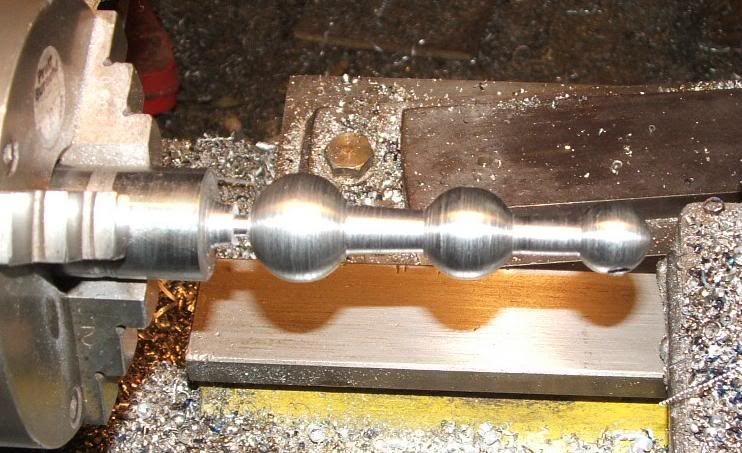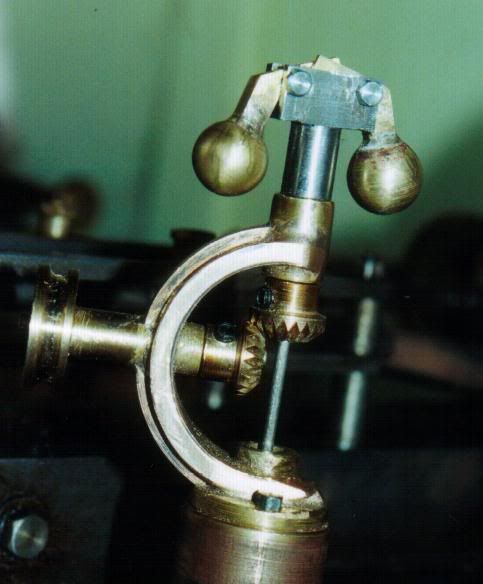Ralph,
No-one is disagreeing with your ball turner at all, just showing that one isn't totally necessary. For repeatable jobs, a ball turner is great, but there are methods that have been used for centuries that give rather acceptable results. This is what the forum is for, showing how you do it, it would be unfair if other people couldn't show their way as well.
I have a ball turner that uses my milling boring head, but find, just like Marv I tend to do it freehand.
This set of pics is for a funnel cap I did recently on another site, not balls or ogives, but curves just the same. The only reason for the mandrel was because it was made out a left over lump, normally it would have the first parts done on the end of a piece of bar.
All that was used for making was the machine cutting tools, to give the basic shape, a second cut, half round file, an emery block and a good dose of polishing. About 3/4 of an hour to an hour total.
I do all my ogives this way, 2" or 3" would present no problems at all, 1/4" done in seconds.
Rather difficult to do with a ball turner.
John
 I'm starting on some much needed tooling and a ball turner is on the list. Don't exactly know where on the list, but it's on there. ;D
I'm starting on some much needed tooling and a ball turner is on the list. Don't exactly know where on the list, but it's on there. ;D

















